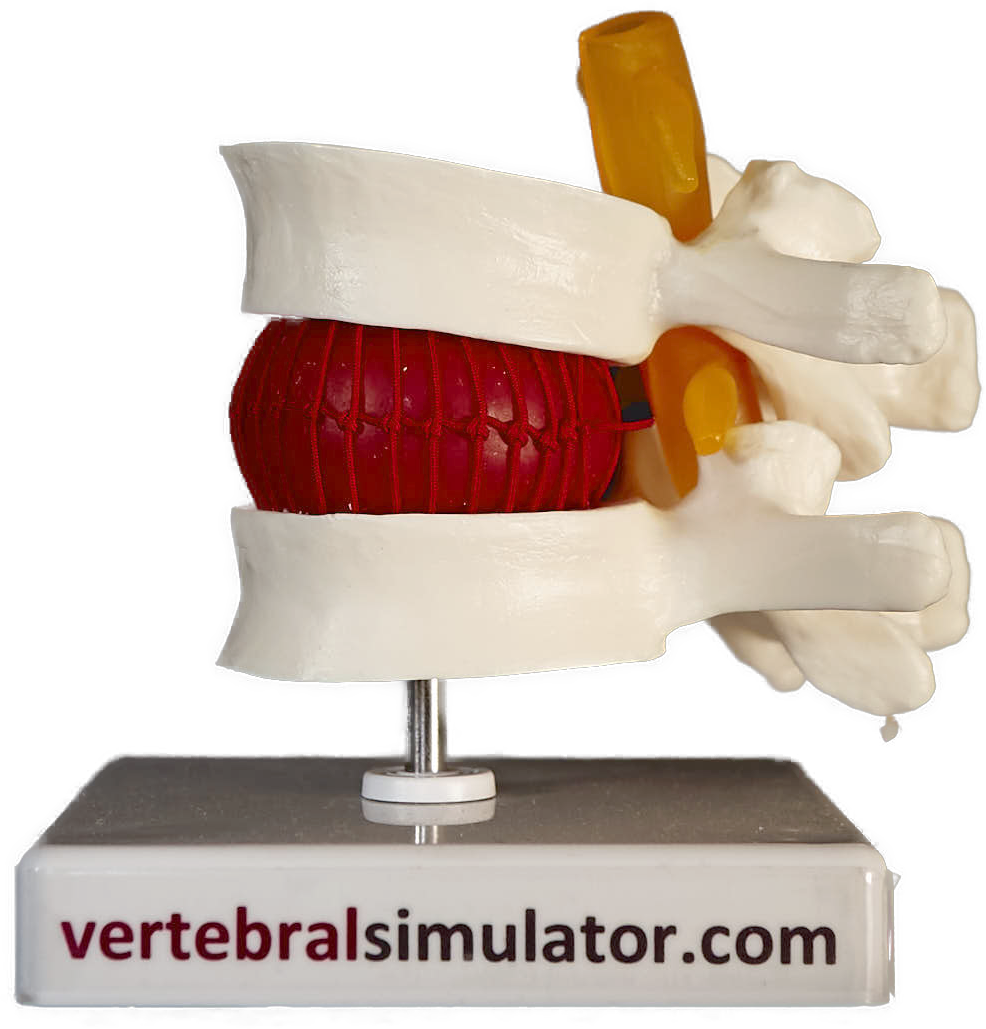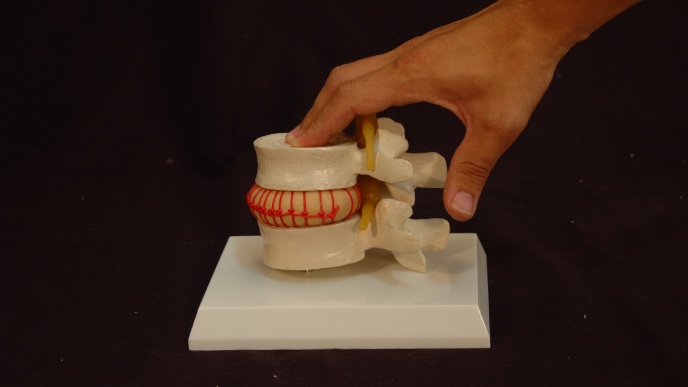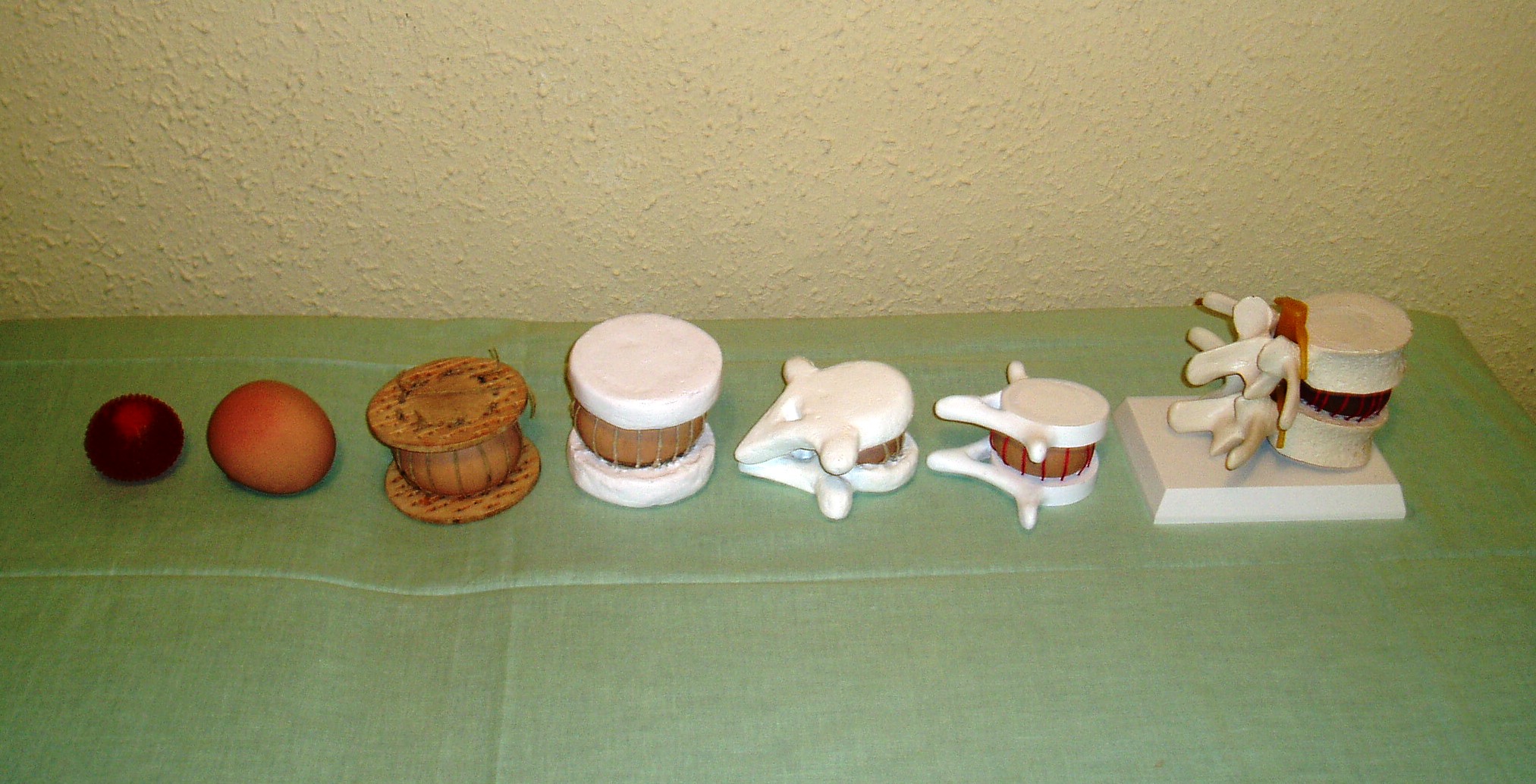Vertical Pression
In their function as shock absorbers, intervertebral discs are constantly being compressed. If you press the simulator straight up and down, the pressure is the same throughout the disc and it becomes homogeneously deformed.
Only if the disc was previously damaged, with injured ligaments, a high pressure might cause a protusion.



